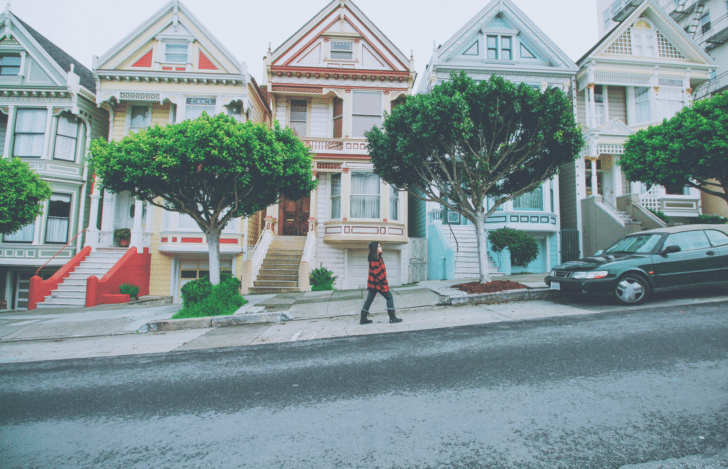New Rent Control Ordinances in the Bay Area

16May
New Rent Control Ordinances in the Bay Area
While San Francisco, Oakland and Berkeley have had rent control and eviction protection laws in place for decades, tenants living in other cities around the Bay Area have not been so lucky. As a result, tenants in these cities have seen huge rent increases and a significant spike in evictions. Thankfully, there has been some pushback of late. In November 2016, several cities voted into law new rent control and eviction protections. Below is a rundown of some of the new laws in the Bay Area.
Mountain View
Voters in Mountain View instituted rent control (at 2% to 5% annually, for units built prior to February 1, 1995) as well as a strong just-cause eviction law, which applies to all units built prior to April 5, 2017. Even San Francisco doesn't have that (limited to pre-June 1979 buildings) Measure V, as the law is known, also provides for a rent rollback for covered units to the 2015 rate or the rate established at the initiation of tenancy, and establishes a Rental Housing Committee to enforce the law.
Until early May 2017, the landlord lobbyist group California Apartment Association was fighting the Mountain View ordinance in court, arguing that rent control was unconstitutional and trammeled on the rights of property owners. However, after a judge denied the group’s request for an injunction to halt enactment of the ballot measure, the CAA dropped their lawsuit, leaving renters in Mountain View to enjoy the law’s protections. A full version of the new ordinance can be found here.
Richmond:
Richmond voters passed a similar law to Mountain View’s, which caps annual rent increases at 100% of the Consumer Price Index. (CPI varies each year, but generally this means that rent increases will be capped at 1% to 4% per year.) The Richmond law rolls back some rents to 2015 levels; creates a Rent Board to enforce the rules; and requires just cause for evictions. A full version of the new ordinance can be found here.
Richmond’s rule also puts a pause on rent increases in covered units until September 1, 2017, at which point the Rent Board will determine the allowable rates.
As in Mountain View, the California Apartment Association attempted to block Richmond’s ordinance through legal means. And just like in Mountain View, the CAA dropped their lawsuit after judges rejected the landlords’ arguments.
Santa Rosa: (On the ballot in June 2017)
The Santa Rosa City Council passed a rent control law in August 2016 -- only to have the law blocked by a petition campaign the next month. Now the city is set to put the issue before voters in a special election set for June 6, 2017.
Tenants’ advocates in Santa Rosa are working to muster local support for the ballot measure, while landlords and their lobbyist groups are pouring money into the fight. As of March 20, landlords--including the same CAA that attempted to block Richmond’s and Mountain View’s laws--had contributed $390,000 to a political group opposing Measure C.
If voted in, Measure C would institute just cause eviction protections and cap rent increases at 3% for covered buildings. If you’d like to see Santa Rosa tenants increase their protections, you can get involved, volunteer or donate here. With the new SMART train expected to open in the near future connecting Santa Rosa to San Rafael, housing prices in Santa Rosa will only continue to increase so putting some protections on rent will be critical to maintaining Santa Rosa's affordability.
Amendments to Existing Rent Ordinances
Oakland: Measure JJ
Oakland voters opted to expand existing protections in four ways.
- Measure JJ requires landlords to obtain prior Rent Board approval if they want to increase rent by more than 100% of the Consumer Price Index. (Previously, the only way for tenants to stop an illegal rent increase was to file a petition protesting it within sixty days of the notice. And if tenants missed this sixty-day window, they were out of luck. This perversely incentivized landlords to try to “get away” with illegal rent hikes, whereas the new law gives the city the ability to enforce rent control laws without relying on tenants’ prompt reporting.)
- The city’s just cause eviction law now applies to all units built on or before December 31, 1995. (This is a substantial expansion from the previous law, which only covered units built prior to 1980. It’s also significantly broader than San Francisco’s own just cause laws, which apply only to units built prior to June 1979.)
- Measure JJ expands the Rent Board’s duties to educate the public. The Rent Board will now mail out an annual notice to all landlords and tenants of covered units, which will specify the allowable rent increases for that year and inform recipients of how to file petitions with the Rent Board.
- Measure JJ also expands the city’s duties to monitor Rent Board activities and gather data regarding landlord-tenant issues in the city. The City Administrator will now report annually to City Council regarding Rent Board petitions and eviction statistics. Also, the Administrator will maintain a searchable public database with information on Rent Board decisions, notices, petitions and appeals.
Berkeley: Measure AA
In Berkeley, renters won bigger relocation payments and some additional rights:
- Landlords now have to pay $15,000 per household to tenants evicted for an owner move-in. If tenants are elderly, disabled, have minor children, or moved in before 1999, they are entitled to an additional $5,000 in relocation payments. (Previously, only low-income tenants were entitled to relocation payments in the event of an owner move-in eviction, and even they received only $4,500.)
- If tenants include school-age children, an owner move-in eviction must take place during summer vacation.
- Tenants are entitled to interest on their security deposits at a rate in accordance with the Berkeley Rent Ordinance.
- The measure clarifies that units with certificates of occupancy issued after June 30, 1980 are exempt from rent control.
- The measure also clarifies that all eviction notices must be filed with the Rent Board.
Alameda: Measure L1
Alameda has a higher rate of homeownership than most Bay Area cities, and perhaps not coincidentally, managed to pass only relatively weak tenant protections in 2016. The 2016 measure, Measure L1, does not establish caps on rent increases; however, it mandates mediation for rent increases above five percent. It also establishes just cause eviction protections for most tenancies, and requires relocation payments in certain cases, such as when tenants are senior or disabled.
East Palo Alto: Measure J
East Palo Alto already has had fairly strong tenant laws for many years. This measure clarified a few points, including establishing that rent increases can occur only once per year, and that increases cannot exceed 10% annually.
Looking Forward
Taken all together, the 2016 elections demonstrated that many Bay Area cities are ready for tougher tenant protections. What’s more, local organizing for all these movements has strengthened tenants’ groups throughout the region.
Another lesson of 2016? Landlords will not hesitate to fund expensive propaganda and legal campaigns to fight against tenants’ rights. If you support stronger rent control laws, you might consider joining a tenants’ group in your city or county, a statewide organizing group like Tenants Together, or a national network like Right to the City.
Related Posts You Also May Like
Get Started
For more information or to discuss your legal situation, call us today at (415) 649-6203 for a phone consultation or submit an inquiry below. Please note our firm can only assist tenants residing in San Francisco, Oakland & Berkeley.





